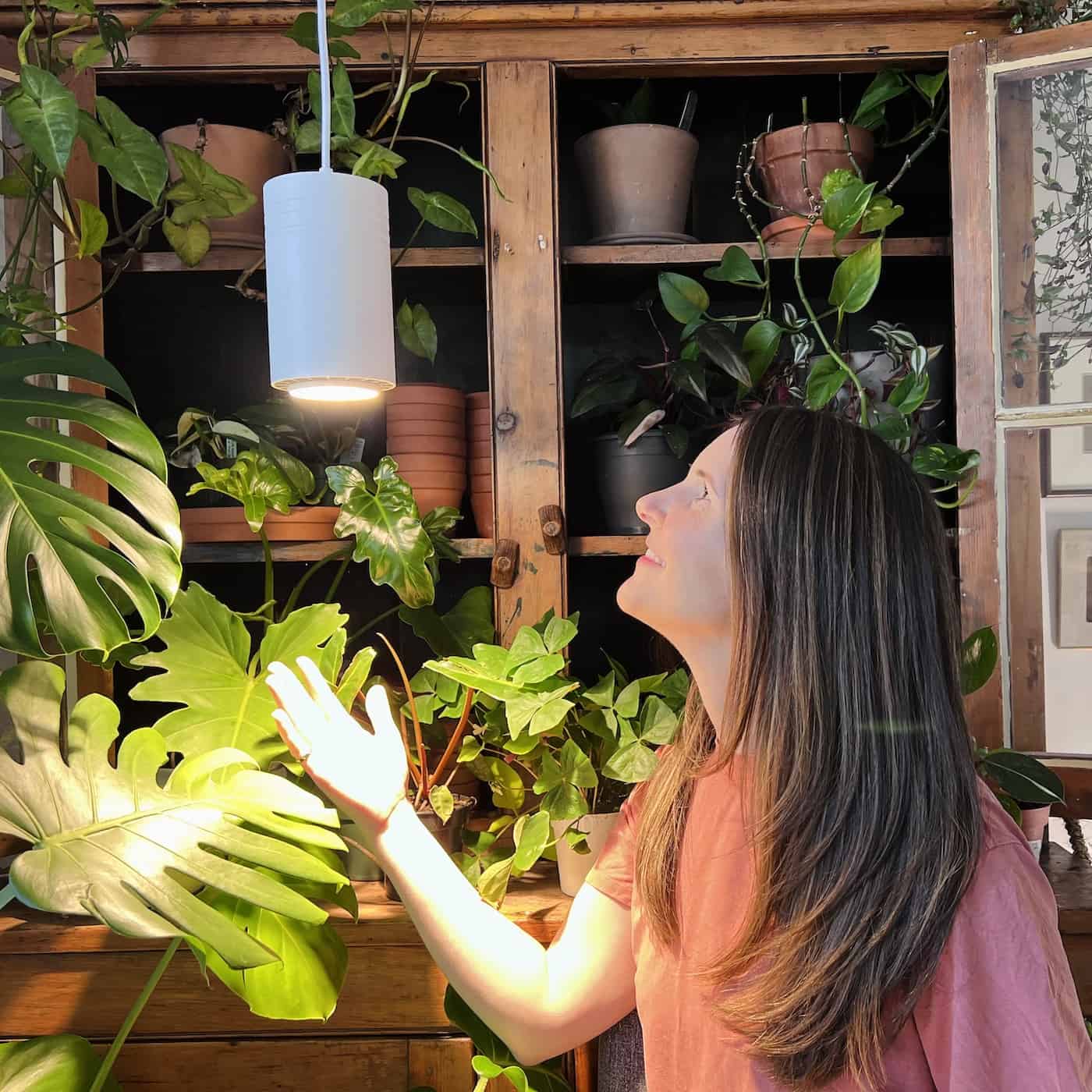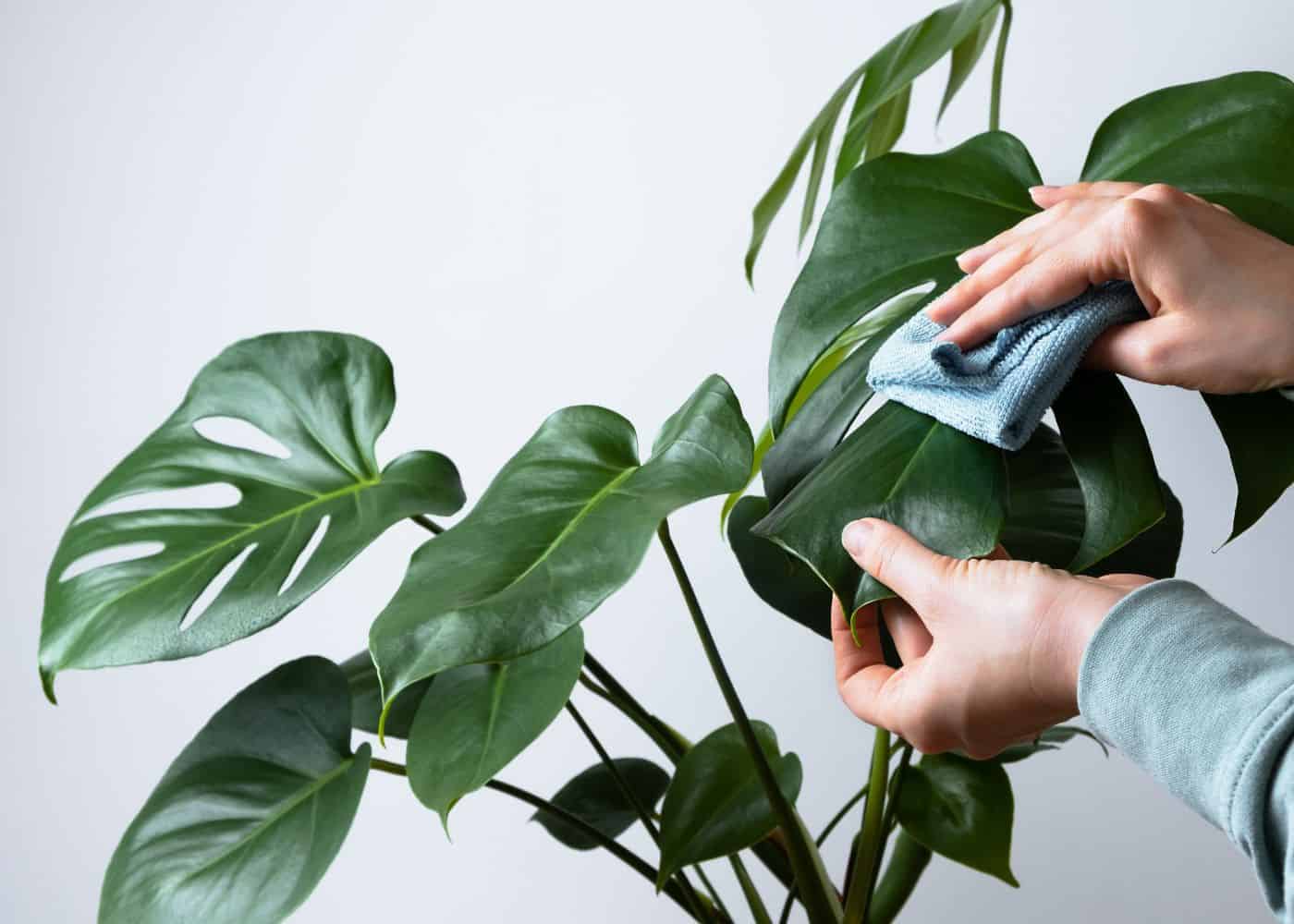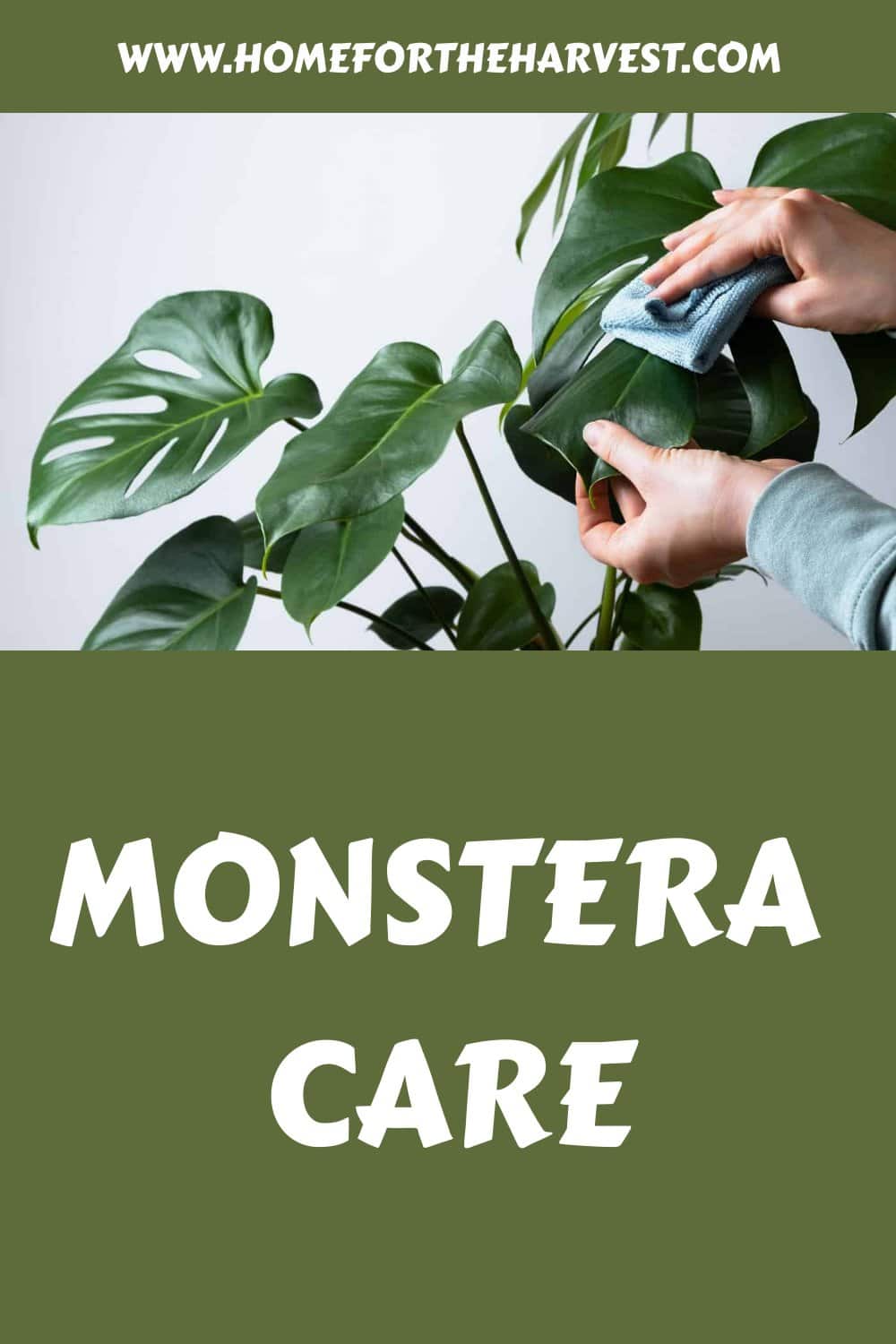From warm tropical forests of Central and South America, Monstera plants grow best in bright indirect light. They can handle lower light areas but may lose their fenestration. As hemiepiphytes, Monsteras are susceptible to root rot and should only be watered when the top two inches of soil have dried out completely. Follow a monthly fertilizing routine during the growing seasons of spring and summer and don’t forget to repot when your Monstera needs more space to expand.
Monstera plant basics
Monstera, although usually the common name given to the most popular species Monstera deliciosa, is actually the name of an entire genus in the family Araceae. This does include the famous Delicious Monster, but also other less common species like Monstera adansonii.
Monsteras are also known by a few common names. The most popular is Swiss Cheese Plant, named for the characteristic holes in the leaves. You may also see some people call the Monstera a Split Leaf Philodendron (not technically a Philodendron).
Monsteras are one of the most popular houseplants around, up there with Pothos and Fiddle Leaf Figs. As long as their indoor environments closely match what they are used to in the tropical jungles of Mexico down to Panama, they are not tricky to care for, treating owners to large and impressive leaves year-round.

Light requirements for Monsteras
One of the reasons people love growing Monsteras is for the interesting holes in their leaves. Known as fenestration, scientists believe these holes developed as a way for the leaves to increase their surface area under the canopies of trees, absorbing as much sunlight as possible.
If you want to maintain this fenestration, matching the sunlight to their natural habitats is essential. Indoors, the dappled shade translates to a full day of bright indirect light. East-facing windows that receive an hour of gentle morning sun are great, or you can cover a bright south-facing window with a sheer curtain to filter the light.
Monsteras can handle lower lighting conditions, but the new leaves will emerge without any holes in them, or may only split on the side closest to the light source. Avoid areas with very low light or no windows as the plant will begin to wilt and eventually stop growing altogether.
Keep the leaves out of the path of any intense midday or afternoon direct sunlight. This can cause unsightly brown burn marks on the leaves facing the light source. Remember to rotate your pots about once per week to give all the leaves equal exposure and maintain a balanced shape.
Watering Monstera plants grown in pots
Due to their thin leaves, Monsteras can begin to curl and wilt quickly when underwatered. This leads some indoor gardeners to assume they need lots of water, preferring consistently moist soil.
But, Monsteras are actually classified hemiepiphytes, growing up trees using aerial roots in their natural habitats. They absorb some moisture from the air as well as the soil and are incredibly sensitive to root rot. If you water your Monstera while the top layer of soil is still moist, the roots will quickly turn soft and mushy, requiring repotting to resolve the problem.
Rather than watering on a set schedule, it’s best to test the soil every few days to determine the perfect time to water. Depending on the light levels and the size of the plant, wait until the top two inches to half of the soil are completely dry before watering again. If you notice any wilting and haven’t watered for a while, water immediately.
Humidity preferences of Monstera plants
Originating from tropical rainforests, Monsteras are huge fans of humidity. They are also able to absorb moisture from the air and expand using their aerial roots due to their epiphytic nature. Essentially, the more humidity you give these plants, the better.
Aim for a humidity level of around 60% where possible. They will survive in any humidity above 40%, but will grow far better when humidity is higher. In their native habitats, they are used to humidity of 75% and higher. Try to get as close to those conditions as you can for the best growth.
If you have dry air indoors, there are a few ways to improve humidity. Keep your Monstera in the most humid room of the house, usually the bathroom. If your air is well below 40% humidity, it’s best to invest in a humidifier if you want your plant to grow successfully.
Temperature requirements for Monstera
Monsteras are accustomed to warmth throughout the year, growing best in temperatures 65F and higher. They can handle lower temperatures down to around 50F but will grow very slowly or not at all in colder weather.
Never leave your Monstera outside or near cold windows during winter, especially if there is any chance of frost. The foliage is sensitive to cold damage and may develop patches of black growth if exposed to frost, even for short periods.
Repotting Monstera plants
Monsteras are considered moderate growers, requiring repotting once per year for young plants and once every two or three years for more established plants. If you notice roots growing from the drainage holes, stunted growth, or sudden wilting with no explanation, it is time to repot.
Repotting is best done in spring for the quickest recovery. Remove the plant from its existing pot, teasing the roots to allow them to expand outwards in the new soil.
Prepare a new pot around two sizes up with a light and well-draining potting mix. You can also make your own soil suitable for epiphytes by mixing one part of potting soil with one part of coconut coir or peat moss and one part of perlite.
Plant your Monstera in the new pot at the same level it was previously. Don’t cover the base too much, as these stems are susceptible to rotting, affecting the rest of the plant on the way up. Leave some aerial roots exposed if you want to attach them to a moss pole or train it up another structure.
Fertilizing Monstera
If you want to get the best possible growth out of your Monstera, including large leaves and towering branches, fertilizing in spring and summer is essential. These quick growers use up a lot of nutrients during the season and will slow growth without a top-up or soil change (as when repotting).
A balanced houseplant fertilizer with an equal NPK ratio is suitable for Monsteras and covers all their needs when growing indoors. Depending on the concentration of your fertilizer, it’s better to start by applying at half strength once per month, only increasing the frequency if it does not appear to be growing to its full potential.
Applying more fertilizer than needed will not help the plant grow better. Instead, it will burn the roots and leaves, slowing growth and having the opposite intended impact. Always follow the instructions on the packaging and never apply more fertilizer than needed.
Pruning Monstera
Monstera plants benefit from annual pruning to encourage or control growth, and regular pruning throughout the year to remove any damaged or diseased leaves. The technique will differ slightly based on the purpose of the pruning.
To encourage new growth, cut towards the top of the plant right above a leaf node. Use a sharp and clean pair of shears to make as neat a cut as possible. These open wounds send signals to the plant to produce new growth at the site of the cut, leading to new leaves and better branching.
To control growth in an unruly Monstera, trim off any leaves growing far beyond the central shape of the plant. Remove any leaves in areas where there is crowding to promote better airflow. Consider moving the plant to a spot with slightly lower light to slow growth and ensure it doesn’t grow out of control again.
Pruning for health should be done throughout the year as soon as any problems pop up. Remove any yellowing or brown old leaves to direct the plant’s energy toward new growth. Trim off any signs of disease immediately to prevent spread.
When pruning, don’t remove more than one-third of the plant at one time to prevent shock.
Propagating Monstera
Monsteras are easy to propagate, especially when using cuttings from recent pruning in early spring. The easiest method of propagation is from stem cuttings, but air layering is generally more likely to produce results.
Stem cuttings
To propagate from stem cuttings, start by identifying a healthy stem with one or two leaves attached to it. Aerial roots are also helpful as they increase the chances of rooting.
Remove the cutting from the plant with a sharp knife or pair of pruning shears right below the node. Pop the cutting in a glass of water and leave it in a bright, humid spot to encourage root growth.
Once the roots are an inch or two long, transplant the cutting into a new pot filled with houseplant potting mix. Don’t leave the cutting in water for too long as it will take longer for the roots to adapt to the new conditions.
Air layering
Air layering is slightly more technical, but increases your chances of rooting by keeping the cutting attached to the plant while the roots develop.
Again, start by identifying a healthy stem. Grab a sharp craft knife and cut into the stem close to a node. Don’t cut too far into the stem – just enough to open it up.
Wrap the stem with moist sphagnum moss and cover with plastic wrap to seal in place. This will create the ideal conditions for root growth around the stem. Keep the moss moist until the roots are about an inch long, then remove the cutting from the plant with roots intact and repot into fresh soil.
Pests & diseases affecting Monstera plants
Monsteras are no strangers to pest problems, even when growing indoors. Keep an eye out for mealybugs, spider mites, and scale that love feeding on the juicy stems and leaves of this plant.
Remove pests as soon as you spot them with targeted insecticidal soap or neem oil. The sooner you address pest problems, the easier they will be to eradicate.
Monsteras don’t experience much trouble with diseases but are incredibly susceptible to root rot. Don’t overwater and plant in well-draining soil to stop any damaging fungal diseases from developing around the roots.







